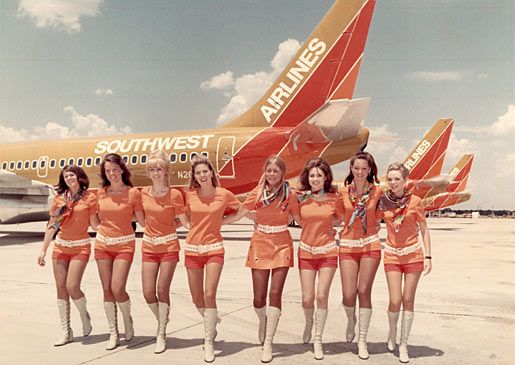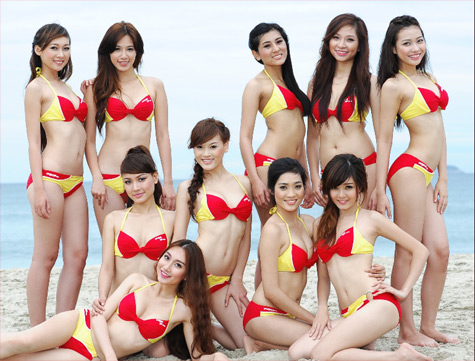One Mile at a Time offers his favorite airline ad campaigns. I get it – he’s offering the ones he enjoys. But it’s not clear to me why several of them would be effective.
To be among my favorites an ad needs to be more than clever or visually appealing, it needs to be effective and make sense for the brand that’s doing the advertising.
There are several different strategies that airlines employ in their advertising and I think this taxonomy is a good way to start thinking about the genre.
Tourism Promotion
It’s usually the role of a tourism authority to promote a destination but often when a country has one major airline, and it’s state-backed, the airline and tourism authority aren’t especially distinguishable. The airline advertises the destination, and if you’re flying there anyway there’s a reasonable chance you might fly the national carrier.
Selling Flying Itself
In the 1930s it was about selling technology, safety, and efficiency. Airlines rarely distinguish themselves on safety (if you’re questioning the safety of flight that’s bad for every airline) but early on airlines promoted all of the advanced things they were doing. Watching this is a shocking window into the period:
Then after 9/11 and the recession that enveloped it, as people were repairing their household balance sheets, it was time to fly. There might have been some positive feelings for United from their campaign by that name, but the messaging was focused on flight. And if you were going to fly it was possible it might be on United.
Selling Sex
In the U.S. National Airlines flight attendants used to ask customers to “fly me.”
Meanwhile Braniff promoted how their flight attendants would ‘strip’ during each trip.
Since Southwest Airlines was based at Love Field in Dallas, they began promoting the ‘love’ theme. LUV is their ticker symbol. In the 1970s flight attendants wore hot pants and gogo boots in a uniform designed by Juanice Muse, the wife of the airline’s first President and CEO.

In fact a Southwest Airlines legal case is the basis for a fundamental precept of employment discrimination law. In the “Love Airlines” case Southwest claimed the right to hire only attractive young women as flight attendants in order to appeal to what was then mostly male business travelers. A federal court determined that the essence of the Southwest Airlines business was transportation not sexual allurement, so their employment policy was illegal sex discrimination. (On the other hand a business that was explicitly sexual in nature could discriminate in this way.)
Just to show you that sex isn’t enough, though, Russia’s Avianova Airlines is no longer in business.
Hooters Air of course did not last very long either (though hubbing at Myrtle Beach, South Carolina didn’t help either).
Nonetheless it’s a time-tested marketing approach. VietJet in Vietnam has branded itself the bikini airline though in fact most of their flights do not feature flight attendants in bikinis (it’s been a marketing stunt on a few inaugurals).

Promoting An Airline As a Better Alternative
I wasn’t a huge fan of the execution of the classic American Airlines ‘we know why you fly’ campaign but the underlying idea was we are focused on the needs of our customers. The message: we put you at the center of what we do, which isn’t how people usually think about airlines.
Another version of selling the airline involves selling ‘features and benefits’ which is what this classic spot did: American Airlines thirty years ago was “The On-Time Machine.” Messaging here is they’d get you where you’re going when they promised.
Selling The Airline Brand You Want To Be A Part Of
Much of marketing – too much in the past several years, perhaps – has been about tying a brand to a cause. Cause marketing often comes off clunky, like when a beer advertises is support for domestic violence charities. But what most ads want to do here, even though they fail, is sell the brand as part of a lifestyle. For people who see themselves a certain way, the brand is a part of that experience.
In other words, we create narratives about who we are and look for ways to reinforce that narrative. If you’re a business traveler on a mission, you get up at 4 a.m. all over the world in order to conquer or change it. And Delta is ready for you at 4 a.m.
Delta does a much better job at articulating a brand purpose here, than when they do something like withdraw NRA conference discounts. Too many companies try to reach for the moon and somehow become Coca-Cola, Nike, or Apple. They’re much better off identifying who they are, and which customers should make them a part of their own narrative, in the most relevant way possible.
The Greatest Airline Ads
The very best airline ads distinguish one carrier from the rest and either:
- credibly present themselves as offering the experience customers want, or
- credibly present themselves as a brand consumers want to identify with.
Credibly leads both of these because advertising has to match the underlying reality of the airline product offering. American was once the on time machine. Delta worked hard to become the preferred choice for business travelers, and earn a revenue premium because business travelers were making that choice. Could United credibly run this commercial today?
My favorite campaign is one that’s featured at One Mile at a Time as well. The Singapore Airlines “Lengths We Go” campaign was heart-warming, and even if you didn’t believe that flight attendants went to small tea shops to find the perfect blend or attended Bollywood film festivals to pick the perfect film for their inflight entertainment it had a certain truthiness – after all, Singapore Airlines has a pressurized room in which to do wine tastings, to simulate how a wine will hold up at altitude.
In late 2015 Singapore Airlines commissioned an Airbus A380 made out of manila envelopes and the seats inside even reclined. The conclusion? “It’s the small details that make giants in the sky.” How very on brand.
Ad Campaigns Need A Clear Objective
We haven’t seen a lot of high-priced ad campaigns by U.S. airlines in recent times. Delta has run more television than United or American. Four years ago Donald Sutherland was their Gene Hackman. (Hackman was better at it, but he had Rhapsody in Blue as an advantage.)
Airlines haven’t needed to advertise to fill seats. Planes were full. And U.S. carriers haven’t done a lot to distinguish their business models. Customers choose on schedule and price because that’s the primary information they’re given (technology) and because the difference between airlines in the U.S. market is, for the most part, modest.
While it’s no coincidence that Delta’s branding spend outpaces peers, there’s been little need to advertise when there’s no real opportunity to gain market share at congested airports. Airlines largely capture decision-makers at government-owned airports they serve, squatting on gates (and in some cases slots) when it makes little economic sense for consumers or the airport to arrange things in this way.
As we come out of the pandemic, and associated recession or depression, there will be empty seats to fill. While on the way down the first and easiest place to cut spending is marketing, we’ll know there’s business to earn and our economy is beginning to recover when we see airline advertising. That means people are ready to fly, and airlines are ready to compete for this business.


A well considered piece.
As a side note, the ad campaign that I found to be the most effective and memorable in the last decade would be Southwest’s Wanna Get Away series.
Hands down the best ads are the United ads with Gene Hackman and the Rhapsody in Blue theme. Nothing else even comes close. And the very best of those are the cartoons, including the guy bringing his mother the rose, and the one of the man retiring after a long career and he finally starts traveling for pleasure.
And who can forget the 1990 commercial, I think called “Ben”, of the company head whose company had been fired by a client for not being close enough. Ben sends all his people out to reengage with old customers. When asked who he is visiting, Ben replies, “the old friend who fired us.”
Also, the genius of the post-9/11 United commercials?
Unfortunately for UAL, the brilliance of its ads don’t get this Lifetime Platinum on their planes.
MAAGA… Make Airline Advertising Great Again (Sorry, couldn’t resist that one, too easy)
Gary, since you’re a Texas guy, surprised you didn’t mention Continental Airlines’ ‘We really move our tail for you” commercials from the 1970’s. I still remember the chorus/refrain from those TV ads all these decades later, and thought the song/jingo was both catchy and emblematic of the right themes an airline should want to promote.